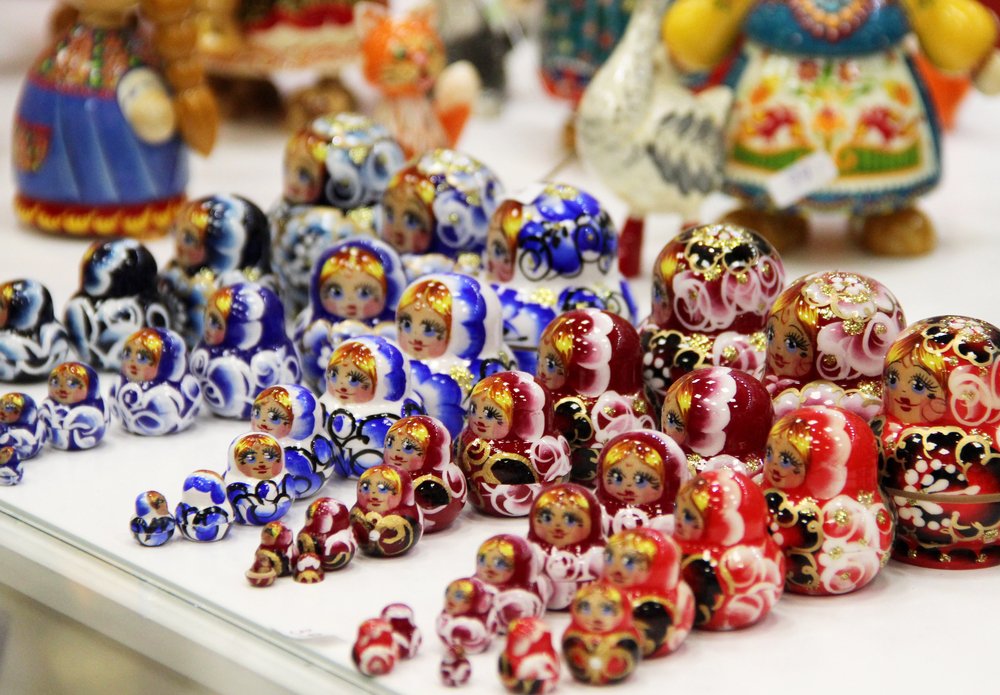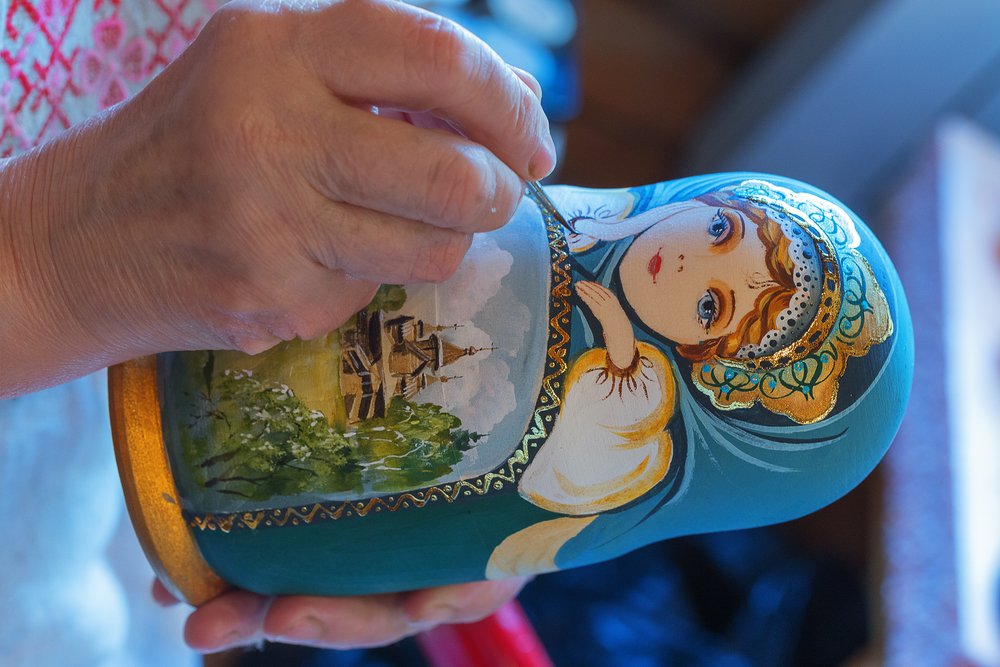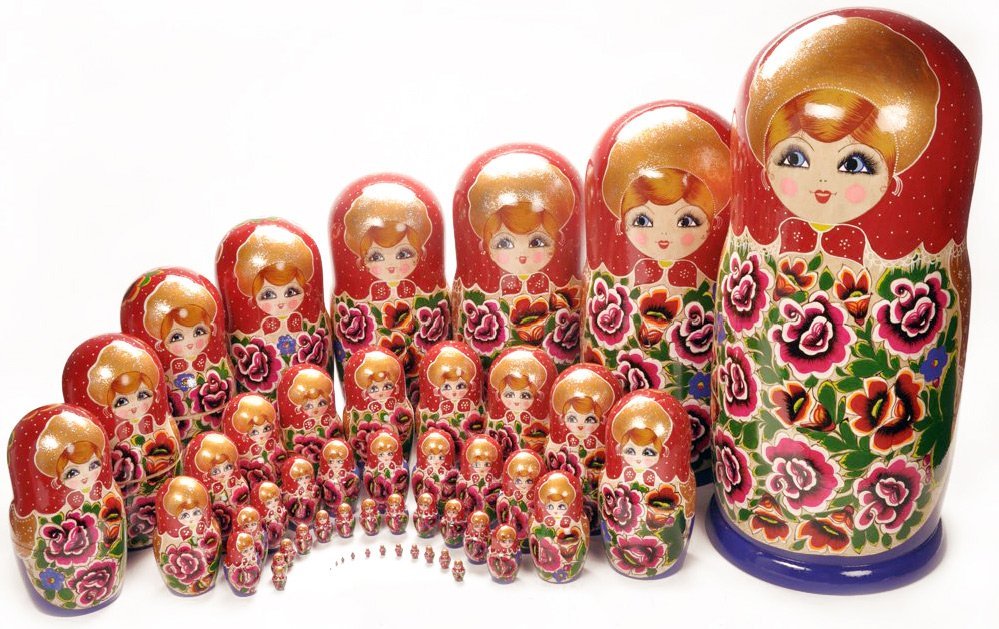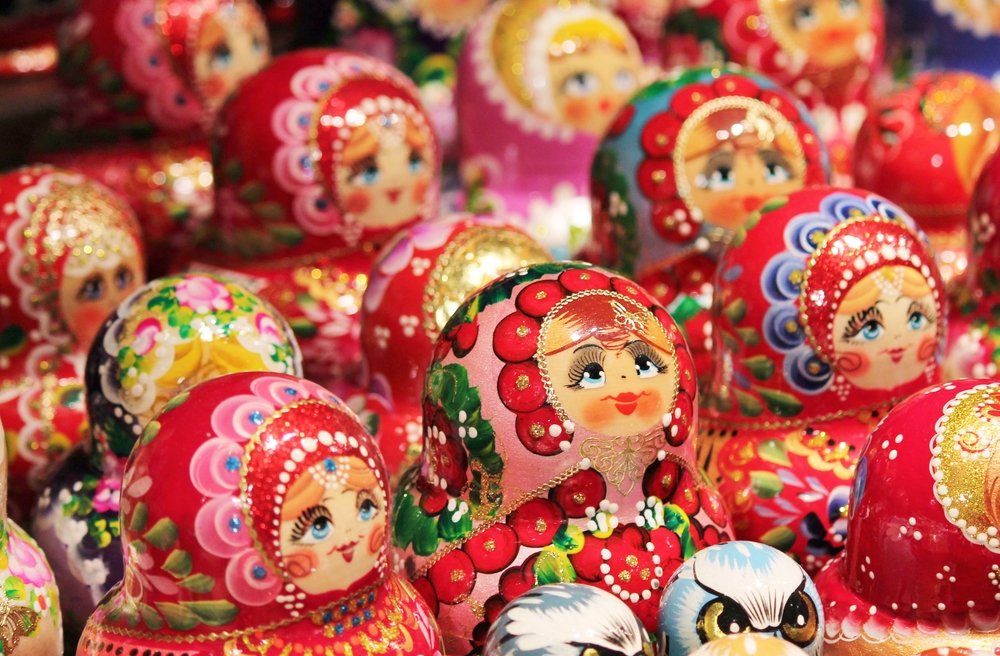If there’s one souvenir that’s synonymous with Russia, it’s surely the nesting dolls known as matryoshkas. It’s hard to resist bringing a set home from your holiday, but few who do know much about their origin and how they get their name. Read this as you unscrew each figure to reveal the next one hiding inside.

The first nesting doll was made over a century ago, in 1890, at an artists’ workshop in the village of Abramtsevo just north of Moscow. The artists used to meet to discuss ideas and at one of these meetings, someone brought a Japanese figurine which had inside it six others of decreasing size. I bet you weren’t prepared for that – Russia’s most iconic souvenir isn’t really Russian after all.
An artist by the name of Sergei Maliutin was intrigued by the Japanese figurines and decided to create one himself but with a style that was uniquely Russian. He designed the doll to take more of a human form as compared to the column-like Japanese figure, and his acquaintance Vasiliy Zveydochin worked a little magic with his lathe to turn out the doll from a piece of linden wood. These days, the same methods are used, though the wood is likely to be birch or lime.

Maliutin turned the raw wood figures into art. His first set comprised a peasant mother with her seven children, most with tiny painted head scarfs and neat little aprons. Compared to more modern examples, the colours are muted, but the set is a thing of beauty and it’s no surprise that it garnered such a popular reception. You can see this original piece of Russian craftsmanship for yourself if you visit the Museum of Toys in Sergei Posad.
The exact reason the wooden dolls were called matryoshkas isn’t clear, but it’s likely that it has some link to the Russian first name, Matriona or Matriosha. This name, with its root in the Latin word “mater” or mother, was very popular amongst the Russian peasant classes at the time, becoming a symbol for a healthy but well-fed woman – in this respect, the dolls reflect the shape as well as the character.

As time went on, different artists put their own slant on these dolls and different areas took on their production. In Sergei Posad, one of the most popular incarnations was sets of matryoshkas that took on a theme: noblemen, warriors, politicians and so on. As the craft developed, it became common to see sets of matryoshkas with more than eight figurines. In 1913, a 48 piece set was made for the St Petersburg Exhibition of Toys. An even more impressive 60 piece set was made in 1967, thought to remain the largest set ever made in the region.
Following the successes seen at Sergei Posad, other centres for matryoshkas production were set up, such as at Semionovo and Polkhovsky Maidan. The former began production in 1924 and has become known for exceptionally large sets, such as a 72 piece set made in 1970 to commemorate Lenin’s birthday. The craft reached Polkhovsky Maidan in the 1930s, a region associated with the most brightly painted matryoshkas.

You’ll have no trouble finding a set to bring home with you. The hard part is choosing which set to buy.
